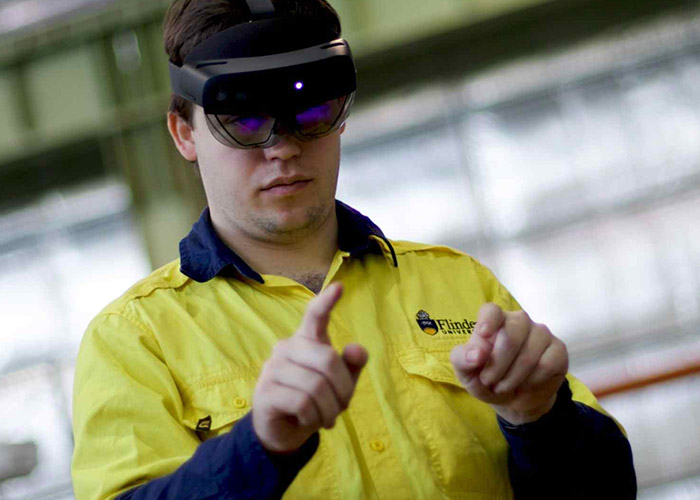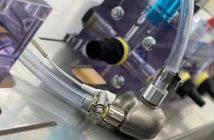
Australia is proving a late adopter of new tools for advanced manufacturing productivity, according to researchers at Flinders University.,
Despite Industry 4.0 technology adoption being promoted to stimulate manufacturing flexibility and competitiveness, Australia has been slow to adopt it,” says Dr Valerie O’Keeffe, a Senior Researcher in Human Factors at Flinders University.
She says the high-tech factory workers of the future will rely on training and support from Industry 4.0 technology, such as augmented reality head-mounted display modules (AR-HMD), to manage workflow and remote troubleshooting, including in the next generation of shipbuilders.
Trials of such AR-HMD technologies to improve productivity by reducing and correcting errors in advanced manufacturing and assembly will improve software, tracking and other promising features of such devices, according to a new online article, Forming a View: A Human Factors Case Study of Augmented Reality Collaboration in Assembly, written by a group of researchers, including O’Keeffe, a recently published in the journal Ergonomics.
“The Australian Navy Hunter Class Frigate Program provides an opportunity for accelerating technology adoption to improve productivity and workforce skills in a traditional, complex and vital industry,” said O’Keeffe. “Augmented reality head-mounted displays provide digital information directly to the user and can be used to guide completion of work tasks.”
To understand shipbuilders’ user experience and workload, the research case study focused on the ‘AR-HMD Hololens 2’ in a simulated manufacturing workflow. This involved multiple tasks (electrical assembly, inspection and quality assurance) with a collaborative robot fitted with a visual inspection camera. The study took place at the Osborne Naval Shipyard with the support of industry partner BAE Systems Maritime Australia.
Dr O’Keeffe says the study highlights AR-HMD as a potential vehicle for integrating advanced technologies and improving functionality while minimising end-user burden.
“This is valuable for fast-tracking learning and building skill levels in a workforce experiencing skilled labour shortages,” she says. “Interface design, tracking, gesturing and device durability were most likely to limit AR-HMD adoption and require improvement to ensure efficient uptake in operations.”
“However, our findings suggest encouraging levels of technology acceptance and motivation in the workforce, potentially promoting learning and productivity. Findings can inform technology adoption, and translating knowledge to heavy industries beyond shipbuilding.”
The study was part of the program of research conducted under the Innovative Manufacturing Collaborative Research Centre (IMCRC) funded project ‘Accelerating the Uptake and Diffusion of Innovative Manufacturing Technologies in Australian Shipbuilding and Supply Chain: The Human Factors.’






